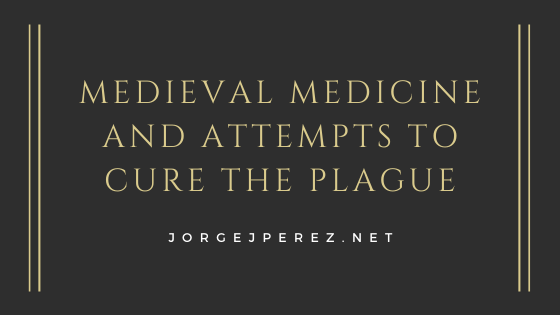In many ways, we are fortunate to live in the time we do, considering the numerous advancements made in essential fields like science and, more specifically, medicine. During the Middle Ages, practices were not as academic, scientific, practical, or effective. Some practices were actually beneficial, though the reason behind such methods was flawed. Other practices, remedies, and treatments, however, did far more harm than good.
We cannot blame the physicians of the past for their ineptitude; after all, they were limited to the knowledge and tools of the times. Though most of medieval medicine has been replaced by safer and more effective methods, considering what those in the Middle Ages did to treat ailments, fight sickness, and even cure the plague is worthwhile if we are to understand how far modern medicine has come and what discoveries have been made because of medieval practices.
Astrology & Magic
In the Middle Ages, many physicians paid close attention to the position of the stars and planets in the sky, believing that these celestial bodies held influence over individual health as well as treatment potency and effectiveness. They possessed charts that connected certain astrological features to various body parts, assuming that the stars, planets, and other interstellar objects would correlate to the experiences of the human body. Doctors often referenced almanacs that featured star charts to aid in their diagnoses. In some regions, doctors were required by law to consider the moon’s phase and position before prescribing or undertaking any procedures.
Though astrology was considered commonplace within the medical field, when traditional medicine failed to alleviate an individual’s suffering, they might have turned to more occult treatments, including that of demonic magic. Some circles also believed that the use of herbs as treatments (which, when applied properly, can be effective) was also a form of magic healing.
Bloodletting
A common belief in the Middle Ages was that the health of the human body was tied to the four bodily humours (black bile, yellow bile, phlegm, and blood) as well as the four natural elements (water, earth, air, fire). When a physician believed an individual’s humours to be unbalanced, he would often prescribe bloodletting, a practice that entailed taking blood from a patient. One approach to this practice involved the use of leeches, but many physicians simply used a sharp tool to piece the vein and allow the blood to flow into a waiting receptacle. While it was a common practice, bloodletting was likely not beneficial in any way, but provided the individual did not lose too much blood, it is also unlikely that the practice did considerable harm.
Plague Treatment
When faced with plague, medieval physicians struggled to find suitable treatments and valid cures for the symptoms. Very few remedies had any positive effect, and some caused more harm in the end. Doctors used animals in an effort to drain the disease from infected individuals; strapping a chicken to an individual and removing it when the creature began showing signs was one method, inspired by the belief that the chicken would absorb the disease, leaving the individual healthy again. Another practice involves cutting up a snake (believed to be associated with the Devil) and smearing the segments over an infected individual’s body. These methods were ineffective.
For nobility and other wealthy members of society, other treatments included consuming ground-up emeralds. A poor man’s alternative involved drinking mercury or arsenic which, as one might imagine, simply accelerated the dying process.
Potions and pastes were also common treatments. One concoction known as Four Thieves Vinegar was composed of cider, wine, and/or vinegar as well as an assortment of herbs including rosemary, sage, and wormwood. The name allegedly comes from the tale of four thieves who, having consumed this potion, were able to sneak into infected homes and rob them without catching the plague themselves.
Medical knowledge was rather limited during the Middle Ages, and doctors believed that the plague was spread through “bad air.” This belief resulted in fumigation practices, using smoke or incense to clear the air within a home, as well as the practice of carrying flowers to repel the disease (and disguise the odor of decomposing bodies).
Ultimately, the people of the Middle Ages learned that quarantining the sick and distancing themselves from one another was the only surefire way to stop the plague. Imposing quarantines of 30 or 40 days, separating the sick from the healthy, and incorporating new practices to help keep caregivers safe (including the infamous plague doctor apparel) were all proven to be effective measures of stopping the plague’s spread, though in many regions, these measures were only adopted after a large number of citizens had already succumbed to the disease.

